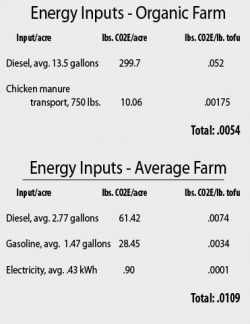On the soy farms
Lonnie Miller has been farming all his life, and has been growing soybeans for 10 years. But unlike the majority of soy farmers in the U.S., Miller, 50, has embraced the organic method, and in 2002 received organic certification for the last of his farm’s fields in Plain City, Ohio, just northwest of Columbus. Now producing 45 bushels an acre, Miller doesn’t even have to irrigate in Ohio’s moist climate.
Miller seems to have a quiet calm about him--his organic lifestyle seems to suit him quite well. "It has really been a good thing for us,” says Miller of their methods. “We don’t have to farm near as much and we still have a good income. And I feel like I’m producing a product that has got to be more healthy than those that have chemicals applied.” Miller uses a three-year rotational system: first comes winter wheat, interspersed with clover. The wheat is harvested in the summer, and the clover is plowed under as “green manure.” The next year the land is given to corn, on which Miller lays about 3,000 pounds of chicken manure, purchased from an egg-laying operation 30 miles down the road. When the soybeans are planted the following year, Miller estimates that about one-quarter of the manure is left in the soil. Miller also tills the previous year’s corn stalks into the soil to make way for the new crop of soybeans. Apart from the manure and what Miller estimates to be about 12-15 gallons of diesel fuel per acre—encompassing two rounds of tillage, planting and harvesting—these soybeans’ inputs are minimal. No inoculator, no growth regulator, no nitrogen, common additives in other soy fields. When weeds get in the way, the humans do the work. “If we do walk the fields we get some labor involved,” says Miller, who enlists the help of his children or neighbors. “But it doesn’t amount to much.” Find out more about conventional soy farming. |
